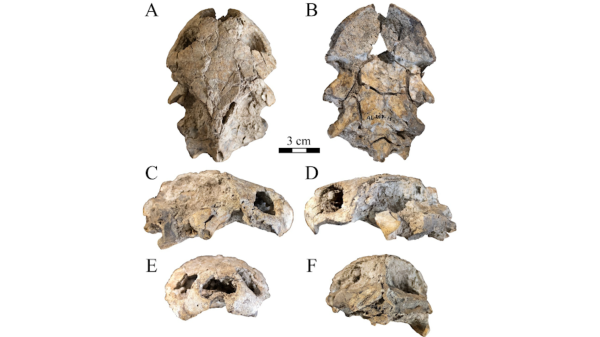ASU researchers awarded $5.8M NIH grant to develop antimicrobial susceptibility test

The scientific community is trying to address antibiotic resistance through the development of new and more effective antibiotics (or other drugs) and diagnostic technologies better able to identify resistant microbes with higher specificity.
Resistant strains of bacteria pose a serious threat to the security of our global health system. As more and more bacteria develop resistance to our best antibiotics, once treatable diseases may re-emerge, potentially causing mass epidemics.
“Antibiotic-resistant bacterial infections, now originating in both health care and community settings, pose serious consequences for public health and burden the U.S. economy with up to $20 billion in health care costs each year,” said Shelley Haydel, an associate professor in Arizona State University's Biodesign Institute Center for Immunotherapy, Vaccines and Virotherapy and the School of Life Sciences.
Antibiotics kill bacteria by attacking the cell wall. Bacterial strains that can resist this mechanism, either by neutralizing the antibiotic or pumping it back out of the cell, survive and multiply while other strains are killed off. This selective pressure for resistant bacterial strains only grows as the same antibiotics are used repeatedly.
The scientific community is trying to address this antibiotic resistance through the development of new and more effective antibiotics (or other drugs) and diagnostic technologies better able to identify resistant microbes with higher specificity.
Biodesign Institute investigators Haydel, Shaopeng Wang and NJ Tao received a five-year, $5.8M grant from the National Institutes of Health to develop a more effective antibiotic susceptibility test that detects and images individual bacterial cells and determines their susceptibility to antibiotics via a novel algorithm.
Such information can allow investigators to determine the right antibiotics with which to treat patients and shed new light on resistant strains of bacteria and their composition within human hosts.
The researchers will start by examining urinary tract infections, which affect millions of individuals annually. According to Fenni Zhang, a researcher in Tao’s lab and a lead researcher on the project, the pathogens that cause urinary tract infections can pose the highest threat of antimicrobial resistance.
The project has three aims (or stages): develop microscopy techniques for tracking the phenotypic traits of bacterial cells; build the prototype instrument; and test the instrument using clinical samples.
Tao, a professor at the School of Electrical, Computer and Energy Engineering and the director for the Biodesign Center for Bioelectronics and Biosensors, will work on the technology development side of the project; Haydel will provide the facilities and her expertise in microbiology to test the imaging techniques; and Wang, a research professor at Biodesign Center for Bioelectronics and Biosensors, will build the prototype instrument.
“Dr. Wang has extensive experience in instrumentation, especially in optical and plasmonic imaging. He will play a critical role in building the prototype and work closely with Biosensing Instrument Inc. to build the instrument,” Tao said.
Although current versions of antimicrobial susceptibility testing (AST) exist, they are typically slow and are only able to accurately detect certain strains of bacteria. Because bacterial infections spread quickly, rapid diagnosis is essential for patient safety.
This new AST would bypass the usual labor-intensive culturing or isolation of the pathogen strain, using instead an optical imaging technique to detect the individual bacterial cells and examine their subtle activity.
“By accurate imaging of sufficient numbers of bacteria cells in raw patient samples, our method can track and extract multiple phenotypic features of each bacterial cell in response to the antibiotics and determine whether the bacteria is susceptible or resistant to certain antibiotics,” Zhang said.
A major contributor of antibiotic resistance is the fact that broad spectrum antibiotics intended to protect against more than one infection are not being used properly. Overuse of such antibiotics, particularly in the agricultural sector, significantly increases the likelihood of bacterial resistance. In the ceaseless arms race between pathogens and our best therapies, the bugs are often winning, as development of effective new drugs becomes more challenging.
“The antibiotic resistance global health crisis is exacerbated by the worldwide overuse of antibiotics and the decline in the discovery of new and effective antibiotics,” Haydel said.
Technologies such as AST could help mitigate this serious problem, providing “precise antibiotic prescriptions that could reduce the overuse and misuse of broad-spectrum antibiotics,” Zhang said.
This test would not only direct more specific antibiotic prescription, but it could also be utilized in future drug development. Drawing from knowledge of susceptibility, investigators could develop new treatments to target resistant bacterial strains.
Haydel has already considered potential applications for her lab’s studies.
“In my lab, apart from this project, we are working with novel antimicrobial compounds for treating multidrug-resistant and difficult-to-treat bacterial pathogens. I am hoping that we will be able to use this technology for clinical microbiology testing of these novel antimicrobials,” Haydel said.
The investigators believe that this joint effort between their two areas of expertise was made possible by the collaborative effort fostered by Biodesign and other schools within ASU.
“Biodesign and Ira A. Fulton Schools of Engineering provide not only the top research lab and facilities for the work, but also a unique multidisciplinary research environment, which is critical for the project,” Tao said.
Tao and Haydel’s lab will work in collaboration with Thomas Grys of the Clinical Microbiology Laboratory at Mayo Clinic and Win Ly of Biosensing Instrument Inc. Grys will supervise clinical tests with the samples, and Ly will lead efforts for instrumentation design and construction.
More Science and technology

New research by ASU paleoanthropologists: 2 ancient human ancestors were neighbors
In 2009, scientists found eight bones from the foot of an ancient human ancestor within layers of million-year-old sediment in…

When facts aren’t enough
In the age of viral headlines and endless scrolling, misinformation travels faster than the truth. Even careful readers can be…

Scientists discover new turtle that lived alongside 'Lucy' species
Shell pieces and a rare skull of a 3-million-year-old freshwater turtle are providing scientists at Arizona State University with…



